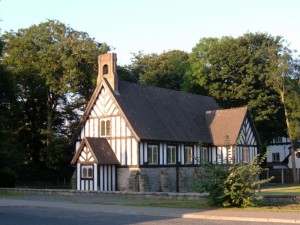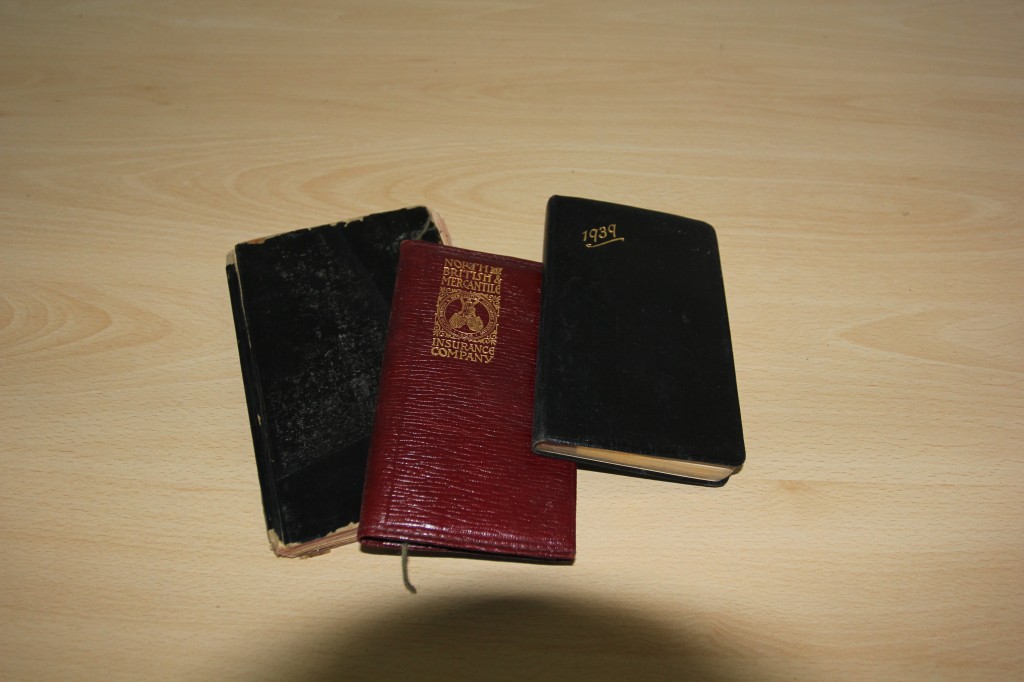Social History of Sion Mills
 The Herdman brothers, James, John and George, who came from Belfast to found the Mill in 1835 to be near the flax-fields of the North-West, were certainly influenced by Robert Owen, and began their own version of his social experiment in building the village and the community of workers for the Mill. They also, like Owen, believed in education and not only educated the children, but also had evening classes for adults. There was a village band as early as 1842 and George Herdman ran singing-classes for the girls who worked in the Mill. Unlike Owen, they were religious, and built the Churches (although for the first 30 years everyone attended Church together in a converted building in the village – and James Herdman used to beat a drum to call the people to church).
The Herdman brothers, James, John and George, who came from Belfast to found the Mill in 1835 to be near the flax-fields of the North-West, were certainly influenced by Robert Owen, and began their own version of his social experiment in building the village and the community of workers for the Mill. They also, like Owen, believed in education and not only educated the children, but also had evening classes for adults. There was a village band as early as 1842 and George Herdman ran singing-classes for the girls who worked in the Mill. Unlike Owen, they were religious, and built the Churches (although for the first 30 years everyone attended Church together in a converted building in the village – and James Herdman used to beat a drum to call the people to church).
They also believed in temperance for the workers and until 1896, when they lost a court case, there was no public house allowed in the village. The Mill Diary kept by James Herdman from 1842 onwards gives a fascinating insight into the social aspects of the mill and the village, besides giving much technical detail of the business of flax-spinning.
A diary has been kept ever since by Herdmans Limited, which was still spinning flax 170 years on, in the most modern flax-spinning mill in the world, built in 1989 immediately to the south of the Old Mill, and employing 600 people.

At its height the Old Mill employed 1500 people. Unfortunately, due to competition from China which has cornered the whole production of linen in Europe, Herdmans Ltd closed down all production in Sion Mills over 2 years, finally closing for good in 2004, with the loss of 600 jobs. Over the centuries the Mill had had good times and bad, sometimes with the future looking very black, but had always bounced back. When the end finally came, although the writing had been on the wall for some years, it came as a real shock to the employees and to the village community who found it hard to believe that the central pivot of village life for 170 years and 6 or more generations was gone for good.
Going back 170 years to the beginnings of Sion Mills village, from the ledgers we learn that there was a gasworks in the Mill in 1839 and in 1842 pipes were laid to the village so that every house had a light, the shop had 4 lights and there were street lights. Later, the Mill installed DC turbines to light the Mill, the village, Sion House and Camus Rectory. Sion House, built by the Herdmans in 1846, was designed by Charles Lanyon of Lanyon Lynn & Lanyon and altered in 1888 by William E Unsworth (a pupil of Lutyens who married the sister of Emerson Tennent Herdman) to a 50 room house in Elizabethan Revival style. Unsworth also designed many of the buildings in the village including the Men’s Institute (now the Recreation Club) and the large Church of the Good Shepherd in 1909 in Byzantine style and modelled on a church in Pistoia, Tuscany. By the end of the 19th Century, there were 240 workers houses in the village, and a population of over 2000.
As already stated, the Herdmans aspired to have a workforce and community which was completely integrated, and one of the most important aspects of Sion which cemented this integration and family spirit has always been Sport. Sion Mills is particularly well-known for its Cricket and has a most distinguished cricketing history. Capt Jack Herdman, President of the Cricket Club from the death of General Ricardo in 1923 until his own death on the morning of the Centenary Cricket Match in July 1964, said that “cricket surpasses all creeds and classes” and the Herdman family promoted it strongly.

